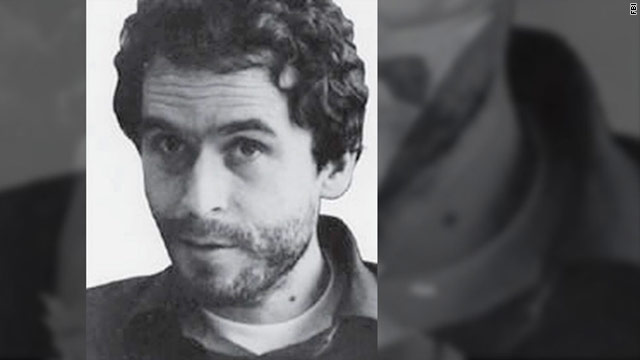Severus Snape
Proud Member
http://www.cnn.com/2011/CRIME/08/04/florida.bundy.blood/
[size=+2]Vial of blood may link Ted Bundy to multiple cold cases[/size]
By Chelsea Bailey and Keren Goldshlager, CNN
August 4, 2011 7:56 p.m. EDT

(CNN) -- Notorious serial killer Ted Bundy confessed to more than 30 murders before he was sent to Florida's electric chair in 1989, but experts have always believed there were more.
Now, investigators across the country are hoping a vial of Bundy's blood -- kept as part of a case record -- will prove or disprove his involvement in cold cases dating as far back as 1961.
Bundy's blood, recovered from an evidence lab in Columbia County, Florida, will be entered into the FBI's Combined DNA Index System (CODIS) on Friday. Investigators say it's a major milestone in a decades-long search for evidence to complete the killer's profile.
A reopened 1961 cold case involving a missing 8-year-old girl in Tacoma, Washington, was the impetus for the completed DNA profile. The girl lived along a newspaper route that the then-teenager Bundy worked, according to published accounts.
Washington state homicide detective Lindsey Wade said her department, which has long suspected a connection between Bundy and Ann Marie Burr, contacted the Florida Department of Law Enforcement in search of a profile that could provide the needed link.
"A profile will assist with whatever evidence you have," said Keith Kameg, spokesman for the department. "It doesn't mean someone did it, but it does mean they were there."
Kameg's department contacted law enforcement agencies across the state seeking any evidence that could be used to build a profile on Bundy.
A vial of Bundy's blood was recovered from the Columbia County Sheriff's Office, and though blood samples degrade over time, Kameg said the department was able to build a profile from that sample.
Bundy was put to death in January 1989, convicted in two trials of three Florida murders. He had prolonged his life by confessing to other murders in other states and was suspected in many more killings. However, he adamantly denied having anything to do with the death of Ann Marie Burr.
Criminal profiler Pat Brown of Washington, D.C., who has written extensively about Bundy, said though Bundy appeared on numerous suspect lists, his killing spree was able to last for years because detectives thought he didn't fit the profile of a typical serial killer.
At the height of his killing spree in the 1970s, Bundy would feign a broken arm or leg and ask young women for help -- luring the victims he would later murder.
At the time of Bundy's convictions, DNA typing was not widely used, but advances in the forensics field have revitalized efforts to link serial killers to unsolved crimes.
"The technology in the past 25 years went from archaic to phenomenal," Kameg said.
Though Bundy is long gone, Kameg said, his DNA profile could answer lingering questions for police and bring comfort to loved ones.
[size=+2]Vial of blood may link Ted Bundy to multiple cold cases[/size]
By Chelsea Bailey and Keren Goldshlager, CNN
August 4, 2011 7:56 p.m. EDT

(CNN) -- Notorious serial killer Ted Bundy confessed to more than 30 murders before he was sent to Florida's electric chair in 1989, but experts have always believed there were more.
Now, investigators across the country are hoping a vial of Bundy's blood -- kept as part of a case record -- will prove or disprove his involvement in cold cases dating as far back as 1961.
Bundy's blood, recovered from an evidence lab in Columbia County, Florida, will be entered into the FBI's Combined DNA Index System (CODIS) on Friday. Investigators say it's a major milestone in a decades-long search for evidence to complete the killer's profile.
A reopened 1961 cold case involving a missing 8-year-old girl in Tacoma, Washington, was the impetus for the completed DNA profile. The girl lived along a newspaper route that the then-teenager Bundy worked, according to published accounts.
Washington state homicide detective Lindsey Wade said her department, which has long suspected a connection between Bundy and Ann Marie Burr, contacted the Florida Department of Law Enforcement in search of a profile that could provide the needed link.
"A profile will assist with whatever evidence you have," said Keith Kameg, spokesman for the department. "It doesn't mean someone did it, but it does mean they were there."
Kameg's department contacted law enforcement agencies across the state seeking any evidence that could be used to build a profile on Bundy.
A vial of Bundy's blood was recovered from the Columbia County Sheriff's Office, and though blood samples degrade over time, Kameg said the department was able to build a profile from that sample.
Bundy was put to death in January 1989, convicted in two trials of three Florida murders. He had prolonged his life by confessing to other murders in other states and was suspected in many more killings. However, he adamantly denied having anything to do with the death of Ann Marie Burr.
Criminal profiler Pat Brown of Washington, D.C., who has written extensively about Bundy, said though Bundy appeared on numerous suspect lists, his killing spree was able to last for years because detectives thought he didn't fit the profile of a typical serial killer.
At the height of his killing spree in the 1970s, Bundy would feign a broken arm or leg and ask young women for help -- luring the victims he would later murder.
At the time of Bundy's convictions, DNA typing was not widely used, but advances in the forensics field have revitalized efforts to link serial killers to unsolved crimes.
"The technology in the past 25 years went from archaic to phenomenal," Kameg said.
Though Bundy is long gone, Kameg said, his DNA profile could answer lingering questions for police and bring comfort to loved ones.
